HOME • HISTORY • COMMODITIES • CUSTOMERS • RUM & WHISKEY • SLAVERY • WAR • ACCOUNTS • MAPS • ESSAYS
|
____________ Commodities 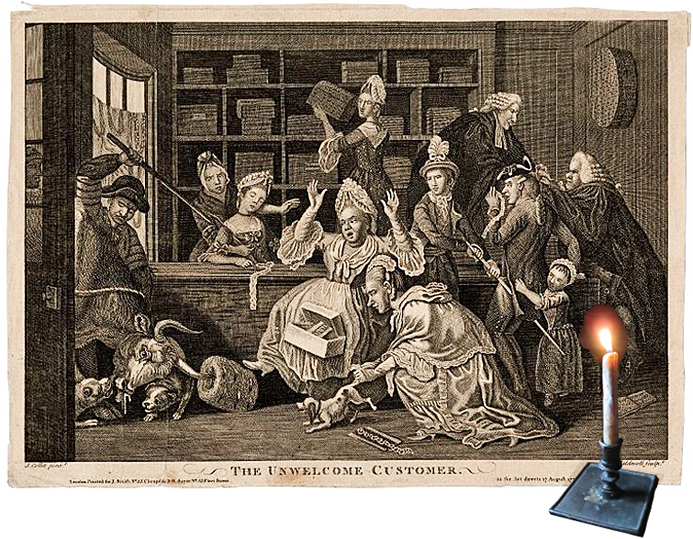 A veritable Wal-Mart for the frontier, Dupui's general store carried textile, clothing, accessories, sewing notions and trims, foodstuffs, gunpowder, shot and lead, paper, ink powder, skins, hides and furs, tobacco, knives and forks, rum and whiskey, combs, farming implements, fodder and other "sundries". Let's have a look at some of these commodities: |
|||
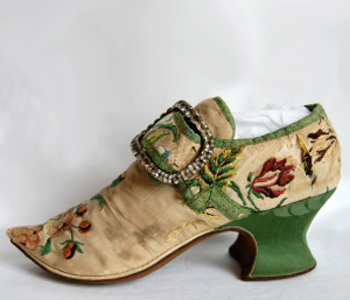 |
FRONTIER FINERY -- At 3 shillings per yard, the cost of calamancoe was comparable to that of buckram, callicoe or shalloon (although considerably cheaper than the cost of broadcloth, linen, muslin or kersey). What exactly was this fabric, and for what was it used? Was it routinely, or only periodically purchased? |
||
 |
POUNDS, SHILLINGS, PENCE & MORE -- UNDERSTANDING 18th CENTURY CASH How many shillings in a pound? How many pence are in a shilling? ...and what about Spanish pieces of eight? Exactly how much was a lot of money back then on the frontier? How much did the typical laborer earn? Did everyone carry a money pouch? This short guide will make everything clear. |
||
 |
BUTTONS, BUTTONS, Brass buttons, buttons of mohair, coat buttons, jacket buttons, sleeve buttons -- all were sold at Dupui's establishment... and of a certitude, many were lost. True enough, archaeologists routinely find lots of buttons at colonial sites. But did you ever wonder why so many people kept losing their buttons? |
||
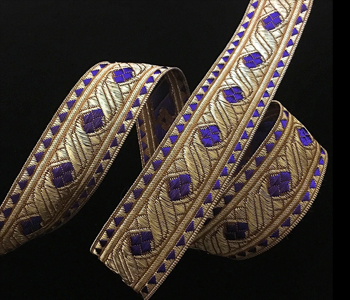 |
INDIAN TRADE GOODS? -- Sold by the pound as well as by the yard, nonesopritty was likely a passamenterie trim. Favored by the locals, the item was often purchased together with scissors, combs, a paper of pins, and garters. But was this particular trim purchased primarily by Indian traders, or did it have a broader appeal? |
||
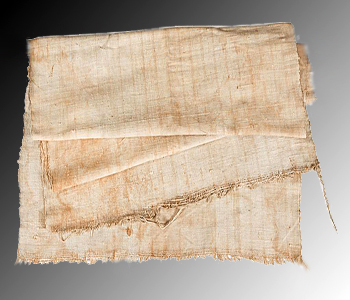 |
NOT JUST SLAVE CLOTH -- So what did slaves wear? Was ozenbrig chosen for slaves merely because it was the most inexpensive fabric available? Did it ever become a fashionable textile? Can anything about the years in which it was sold tell us something never before known about the local population? Was it rarely or frequently purchased? |
||
 |
NOT JUST FOR LICE? Fine tooth combs, course combs, small combs... and of course, the issue of lice. Have we any evidence that locals were subject to lice infestations? Were combs often sold? Were combs gifted by men to women? Were combs ever purchased for slaves? What can comb purchases tell us about our early area settlers? |
||
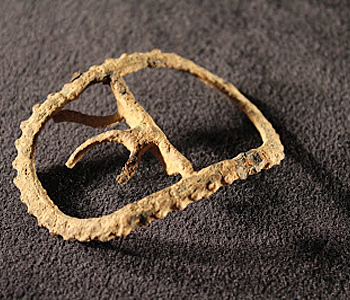 |
ITEMS OF PERSONAL ADORNMENT -- Knee buckles? Shirt buckles? Shoe buckles? Fashion items, to be sure. But were they sold only in certain years, or throughout the store's history? ... and how long did this fashion trend last? Were they inexpensive or costly? Ornate, or perhaps not? Did shoes come with buckles already attached? |
||
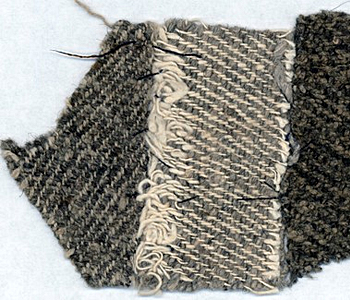 |
"TO 9 YDS. & A HALF AT 10s. PER YD. IS" -- KERSEY So what exactly was kersey? Was it locally sourced or imported? How many yards of kersey were routinely purchased? Was it a popular fabric? Was this a heavy fabric or a lighter weight than broadcloth? Would it keep you warm? If you bought kersey, did you also need to purchase a liner fabric? Relatively expensive, or not? |
||
 |
HITTING THE NAIL ON THE HEAD Individually manufactured, were nails also sold individually, or were they purchased by the pound? Were nails cheaper when you bought them along with a coffin? Were nails only sold at the store until the blacksmith trade became established? How much would a pound of nails set you back? |
||
 |
FIREARMS, GUNPOWDER, LEAD & SHOT So when was the first gun sold in our area? Did merchant Dupui own any artillery pieces? Were knives often sold to our indigenous population? What about gunpowder and lead? Were sales of firearms frequent or sparse? What about during periods of warfare? Were any powder horns sold? |
||
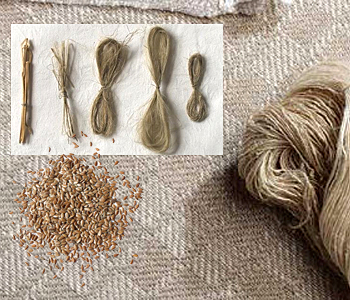 |
FROM FLAXSEED TO LINEN Did this area produce any textiles? Or were they all imported? Can recorded harvest days offer us a clue as to which crops might have been grown for textile production? How often was flaxseed purchased? Was it sold by the skippel, quart, bushel or pound? Did we have a local weaver? How many acres were needed to clothe a family? |
||
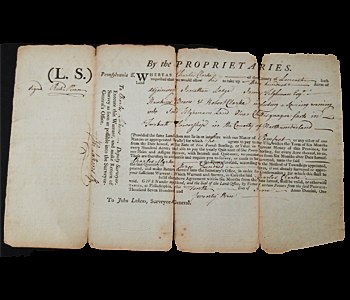 |
LAND RIGHTS -- WARRANTS, SURVEYS, PATENTS & CAVEATS How large were our first surveyed parcels of land? Was the tax burden onerous? Did we encounter any disputes over land holdings? What was the difference between a land deed and a land indenture? How large was Nicholas Dupui's property? What did our earliest survey maps look like? Rods and perches? So how did one actually buy property back then? |
||
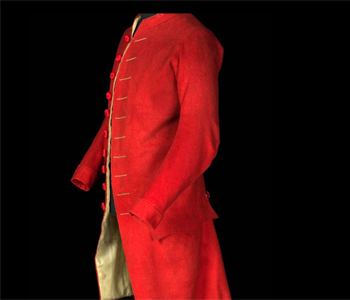 |
THE ULTIMATE IN GARMENT LINING Woolens, worsted, coarse kerseys and course garlix... arguably, there's nothing more annoying than clothes made from itchy and scratchy homespun fabrics. To the rescue -- shalloon! A rather inexpensive liner fabric, shalloon was frequently sold at Dupui's store. It was so popular that even "remains of shalloon" were purchased. |
||
 |
LUXURY ON THE FRONTIER Who would have thought?!! Silk skeins, silk lace and silk handkerchiefs on the frontier! While one might have expected such luxuries as beaver hats to be sold at Dupui's establishment, who knew that silk handkerchiefs were in demand? Their demand actually far outpaced cotton handkerchiefs (also available in multiple sizes). |
||
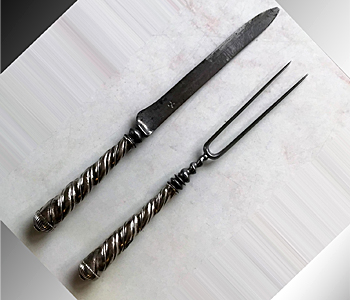 |
THE MID-18th CENTURY'S HOTTEST ITEM Sold more often than any other item, the matching knife and fork set was a frontier "must-have" commodity. But why was this such a popular purchase? Surely, settlers that established homes in this area must have brought their cutlery with them... so why were so many of these knife and fork sets sold? This mystery has an answer... |
||
 |
BY THE PINT, QUART & BUSHEL Salt. Everybody needs it, but this area is not exactly known for its salt mines or brine springs... so from where was Dupui's salt sourced? Did folks need to buy it from Dupui, or did most households already have their own supply? Was salt used primarily for the preservation of salt pork, or did colonists mostly use it as a seasoning? |
||
 |
FRONTIER HOME BREW Yes, Metheglin was sold at Dupui's store, as was rum, punch, and rye whiskey. But did he sell much of it, or did most settlers manage to brew their own? One of the simplest recipes, mead can be made from nothing more than honey, yeast and berries. Its ease of production should have made mead a frontier favorite. But was it? |
||
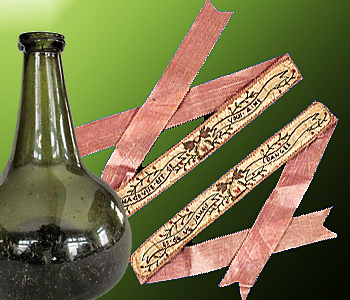 |
"TO A QUART OF RUM & A PAIR OF GARTERS" Rum. The one commodity most often purchased at Dupui's store. Available by the gill, pint, quart, half-gallon, gallon and in 107-gallon hogshead barrels, rum was the frontier's beverage of choice. So popular was this commodity that Dupui even provided a delivery service by way of a local trapper. Also sold to Indians. |
||
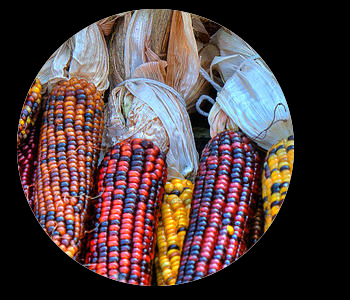 |
ONE OF THREE SISTERS?
Bushels of Indian corn were regularly sold to area settlers from 1745 to 1786. To a lesser degree appear sales of beans (the second sister), with but a single reference to the "hauling of your pumpkins" (third sister), but clearly the three sisters played a role in the local economy. Still, were any such crops actually bought from the Indians? |
||
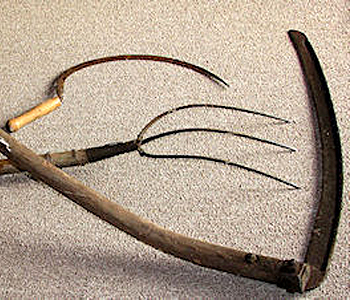 |
"TO A SCYTHE HANDLE" Scythes, along with a range of other necessities such as dung forks, plows, saddles and bridles, were available from Nicholas Dupui's store. Sleigh chains, horse collars and rope were also available, as were harvest tools such as horses and oxen. On the home front, bedsteads were for sale, as were roofing shingles, doors & handles. |
||
|
|
|||